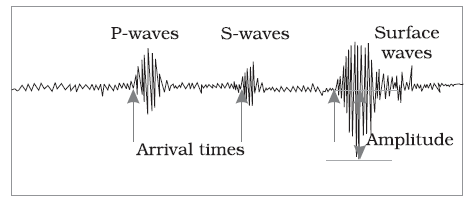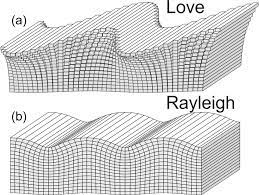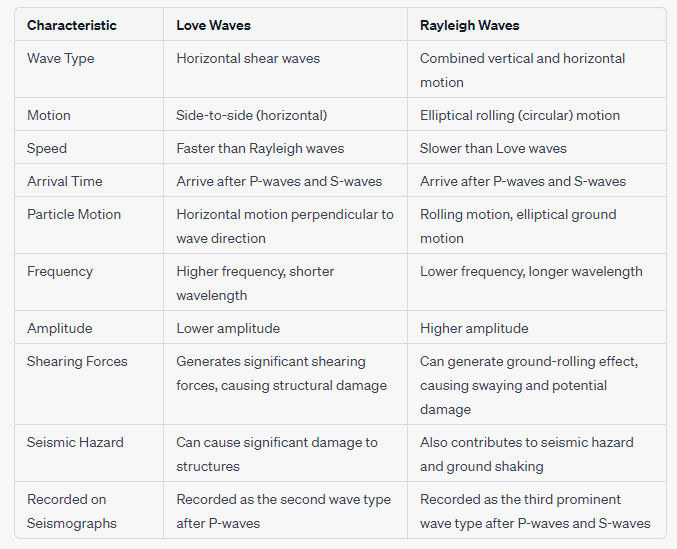Love and Rayleigh waves are two types of surface waves that are generated by earthquakes and travel along the Earth’s surface. These waves are responsible for the shaking and ground motion that can cause significant damage during seismic events.

Let’s explore each of these surface waves in more detail:
Table of Contents
Love Waves
Love waves are a type of horizontally polarized shear wave. They move with a side-to-side motion, similar to the motion of a snake or a wriggling rope. Love waves are the fastest surface waves and typically arrive after the initial body waves (P-waves and S-waves) during an earthquake. They propagate through the Earth’s crust in a horizontal, side-to-side motion that is perpendicular to the direction of wave travel.

Key characteristics of Love waves:
- They have a higher frequency and shorter wavelength compared to Rayleigh waves.
- Love waves are particularly damaging to structures because their side-to-side motion can generate strong shearing forces in the ground, leading to significant structural damage.
- They are typically recorded on seismographs as the second prominent wave type after the initial P-wave arrival.
Rayleigh Waves
Rayleigh waves, also known as ground roll or rolling waves, are a type of surface wave that combines both vertical and horizontal motion. They create an elliptical, rolling motion as they travel along the Earth’s surface. This rolling motion is similar to the motion you might observe in ocean waves.
Key characteristics of Rayleigh waves:
- Rayleigh waves are slower than Love waves and arrive after both P-waves and S-waves.
- They have a circular motion that causes the ground to move both vertically and horizontally in an elliptical pattern.
- Rayleigh waves are responsible for a significant portion of the shaking experienced during an earthquake.
- The circular motion of Rayleigh waves can lead to a “ground-rolling” effect, causing buildings and structures to sway and potentially suffer damage.
Comparison of two waves

In summary, both Love waves and Rayleigh waves are types of surface waves generated by earthquakes. While Love waves cause side-to-side motion, Rayleigh waves create a rolling, elliptical motion. These surface waves are the primary cause of the damaging shaking and ground movement associated with earthquakes, making them crucial factors to consider when assessing seismic hazards and designing structures to withstand earthquakes.
Read